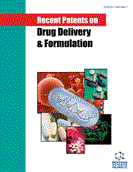Abstract
Objective: Norfloxacin has a low aqueous solubility which leads to poor dissolution. Keeping this fact in mind the purpose of the present study is to formulate and evaluate norfloxacin solid dispersion. Methods: Solid dispersions were prepared using hydrophilic carriers like polyethylene glycol (PEG) 4000, polyvinylpyrrolidone (PVP) k30 and carbopol 974pNF (CP) in various ratios using solvent evaporation technique. These formulations were evaluated using solubility studies, dissolution studies; Fourier transmitted infrared spectroscopy (FTIR), X-ray diffraction (XRD), and differential scanning calorimetery (DSC). The influence of polymer type and drug to polymer ratio on the solubility and dissolution rate of norfloxacin was also evaluated. Results: FTIR analysis showed no interaction of all three polymers with norfloxacin. The results from XRD and DSC analyses of the solid dispersion preparations showed that norfloxacin existsin its amorphous form. Among the Norfloxacin: PEG solid dispersions, Norfloxacin: PEG 1:14 ratio showed the highest dissolution rate at pH 6.8. For norfloxacin: PVP solid dispersions, norfloxacin: PVP 1:10 ratio showed the highest dissolution rate at pH 6.8. For Norfloxacin: CP solid dispersions, norfloxacin: P 1:2 ratio showed the highest dissolution rate at pH 6.8. Conclusion: The solid dispersion of norfloxacin with polyethylene glycol (PEG) 4000, polyvinylpyrrolidone (PVP) k30 and carbopol 974p NF (CP), lends an ample credence for better therapeutic efficacy.
Keywords: Carbopol 974p, dissolution, norfloxacin, PEG 4000, PVP K30, solubility.
 27
27 5
5 1
1 1
1















